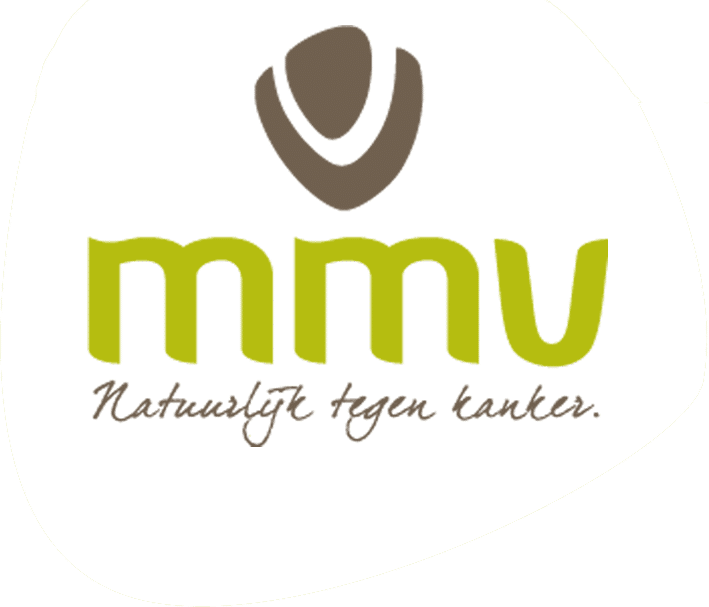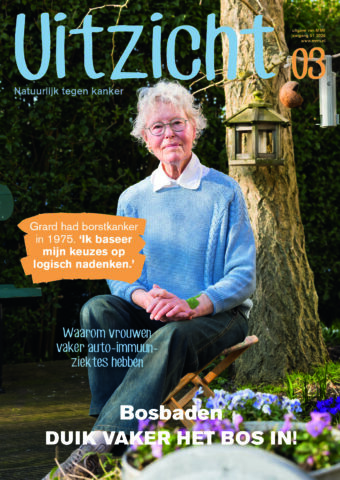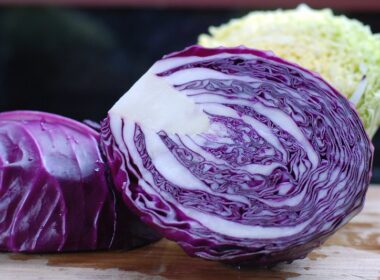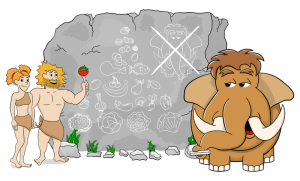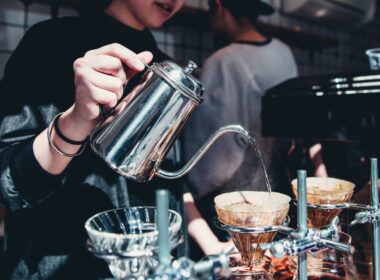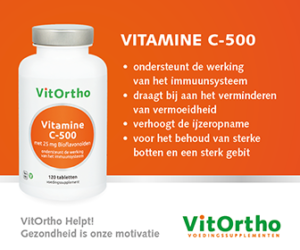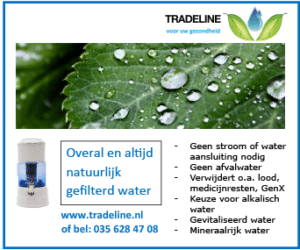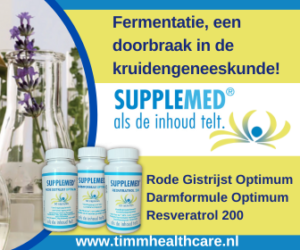Honing bevat 82 gram koolhydraten per 100 gram, waaronder fructose, glucose, maltose, sucrose en meer dan 22 andere suikers. Honing is een ‘vrije’ suiker, maar is het daarmee ongezond?
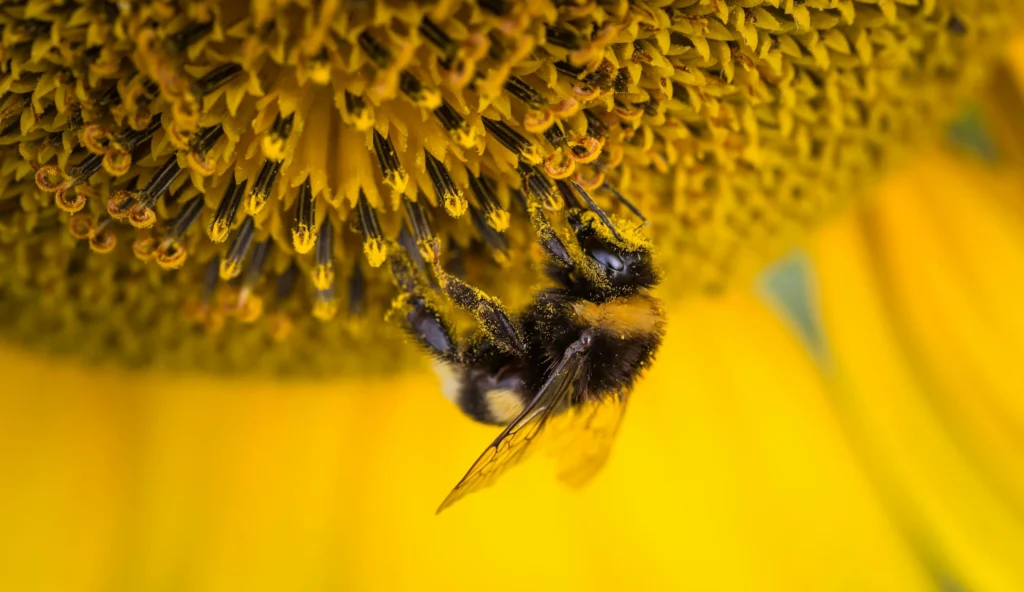
In de meeste westerse landen eten volwassenen ongeveer 105 gram suiker per dag. Die komen uit ‘intrinsieke’ suikers (45 gram per dag), die van nature zitten in onbewerkt fruit, groentes en melk (lactose) en ‘vrije’ suikers (ongeveer 60 gram per dag). Vrije suikers zijn door de fabrikant, kok of consument toegevoegd (‘toegevoegde’ suikers), maar ook de suikers die van nature aanwezig zijn in honing en ongezoete fruitsappen (7 g/d) (1,1a,2). Vrije suikers zijn ‘lege’ calorieën die bijdragen aan tandbederf, overgewicht/obesitas, type 2 diabetes en hartvaatziekte (2-2e). Daar moeten we ’zo min mogelijk’ van eten, aldus de European Food Safety Authority (EFSA) sinds 2022 (5,6).
Honing is dus een ‘vrije suiker’, maar het is ook een uniek natuurproduct. Nectar uit bloemen vormt de basis (7-11). Het wordt door werkbijen verzameld en in de korf overgedragen aan huisbijen. Die slaan het, evenals het verzamelde stuifmeel, op in cellen van bijenwas. Andere huisbijen concentreren de nectar door te wapperen met hun vleugels: bijen zijn ware chemici (9). Honing is bedoeld als voeding voor de winter. Normaliter eten bijen nectar en stuifmeel als eiwitbron.
Het is een combinatie van probioticum (micro-organismen) en prebioticum (hun voedsel)
Onlangs zetten onderzoekers de gezondheidsvoordelen van honing voor hart en vaten op een rij. In 18 onderzoeken daalde bij een dosis van circa 40 gram per dag in acht weken de nuchtere glucose, het (‘slechte’) LDL-cholesterol, triglyceriden en een leverenzym, terwijl twee ontstekingsparameters en het (‘goede’) HDL-cholesterol stegen. In tegensteling tot rauwe, onbewerkte honing had geraffineerde honing geen, of zelfs een ongunstig, effect. Honing uit een enkele plant – bijvoorbeeld bij de witte acacia en klaver- blijkt beter dan honing uit meerdere bloemen (13,14).
Honing is dus niet simpelweg ‘suiker’. In de oudheid (15,16) werden de geneeskrachtige eigenschappen van honing bij infectie en wondgenezing reeds erkend (17). Hadza jager-verzamelaars in Tanzania halen gemiddeld 15 energieprocenten van hun dagelijkse energie uit honing (21,22) en die zijn bepaald niet dik (23). Gunstige effecten zijn bekend bij het voorkómen en de behandeling van hoge bloeddruk, kanker, astma en diabetes (15,16,18,19). Het werkt als antioxidant, is anti-inflammatoir, antimicrobieel en anti-overgewicht. Daarnaast gaat goede honing ongewenste celdeling en snelle celgroei tegen. Bovendien beschermt het de hersencellen, verbetert het geheugen en verlaagt het gevoelens van angst (15,16,20).
Honing bestaat voor 82 gram per 100 gram uit koolhydraten waarvan 39 procent fructose, 31 procent glucose, 7 procent maltose, 1 procent sucrose en meer dan 22 andere suikers (15,16,18). Voorts bestaat het uit water, eiwit (waaronder enzymen), organische zuren, multi-mineralen, aminozuren, vitamines (vitamine C: 2 mg/100 g;18), (poly)fenolen en talrijke andere (bioactieve) verbindingen (16,17,18,24,25). De enzymen stammen uit de plantennectar, de maag van de honingbij en andere insecten en micro-organismen, zoals gist. In de korf ontstaan bij het honing-‘rijpingsproces’ nieuwe stoffen, zoals prebiotisch-werkende oligosachariden. Ook zijn er probiotische (melkzuur)bacteriën en schimmels die de koolhydraten in honing kunnen fermenteren: er is sprake van een ‘honing microbioom’ (13,26). Dat maakt honing tot een uniek synbioticum’; een combinatie van een probioticum (micro-organismen) en een prebioticum (hun voedsel) (13,26,28-33). Echter: mits rauw en onbewerkt! Supermarkthoning is doorgaans van een andere orde: geperst, gefiltreerd, kort verhit tot 60-65 °C en daarna snel afgekoeld (13). Wederom is vastgesteld dat het bij gezonde voedingsmiddelen gaat om kwaliteit, dosis en context en niet om een enkel nutriënt. Ook de ene ‘vrije’ suiker is dus de andere niet.
Sugar intake and risk
1. RIVM. Voedselconsumptiepeiling (VCP) 2012-2016. Suiker, toegevoegd. Accessed 05-03-2023
https://www.wateetnederland.nl/onderwerpen/suiker
1a. Walton J, Bell H, Re R, Nugent AP. Current perspectives on global sugar consumption: definitions, recommendations, population intakes, challenges and future direction. Nutr Res Rev. 2021 Aug 9:1-22. doi: 10.1017/S095442242100024X. Epub ahead of print. PMID: 34369326.
https://pubmed.ncbi.nlm.nih.gov/34369326
2. Australian Health Survey: Consumption of added sugars, 2011-12, Released at 11:30 AM (CANBERRA TIME) 27/04/2016; accessed 05-03-2023
2a. Mann J. Free sugars and human health: sufficient evidence for action? Lancet. 2004 Mar 27;363(9414):1068-70. doi: 10.1016/S0140-6736(04)15844-3. PMID: 15051288.
https://pubmed.ncbi.nlm.nih.gov/15051288
2b. Te Morenga LA, Howatson AJ, Jones RM, Mann J. Dietary sugars and cardiometabolic risk: systematic review and meta-analyses of randomized controlled trials of the effects on blood pressure and lipids. Am J Clin Nutr. 2014 Jul;100(1):65-79. doi: 10.3945/ajcn.113.081521. Epub 2014 May 7. PMID: 24808490.
https://pubmed.ncbi.nlm.nih.gov/24808490
2c. Gill JM, Sattar N. Fruit juice: just another sugary drink? Lancet Diabetes Endocrinol. 2014 Jun;2(6):444-6. doi: 10.1016/S2213-8587(14)70013-0. Epub 2014 Feb 10. PMID: 24731678.
https://pubmed.ncbi.nlm.nih.gov/24731678
2d. Yin J, Zhu Y, Malik V, Li X, Peng X, Zhang FF, Shan Z, Liu L. Intake of Sugar-Sweetened and Low-Calorie Sweetened Beverages and Risk of Cardiovascular Disease: A Meta-Analysis and Systematic Review. Adv Nutr. 2021 Feb 1;12(1):89-101. doi: 10.1093/advances/nmaa084. PMID: 32696948; PMCID: PMC7850046.
https://pubmed.ncbi.nlm.nih.gov/32696948
2e. Malik VS, Hu FB. The role of sugar-sweetened beverages in the global epidemics of obesity and chronic diseases. Nat Rev Endocrinol. 2022 Apr;18(4):205-218. doi: 10.1038/s41574-021-00627-6. Epub 2022 Jan 21. PMID: 35064240; PMCID: PMC8778490.
https://pubmed.ncbi.nlm.nih.gov/35064240
Sugar recommendations
3. Global Health and Pharma. 5 Year-Olds Eat and Drink Their Body Weight in Sugar Each Year. Posted on June 28, 2016, Accessed 05-03-2023
https://www.ghp-news.com/2016-5-year-olds-eat-and-drink-their-body-weight-in-sugar-each-year-38e6
3a. Gander K. Children aged five eat their bodyweight in sugar, experts warn. The Independent, Monday 04 January 2016 10:24, accessed 05-03-2023
4. Guideline: Sugars Intake for Adults and Children. Geneva: World Health Organization; 2015. PMID: 25905159.
https://pubmed.ncbi.nlm.nih.gov/25905159
https://www.ncbi.nlm.nih.gov/books/NBK285537
5. EFSA NDA Panel, 2022. Scientific Opinion on the Tolerable Upper Intake Level for dietary sugars (EFSA-Q-2016-00414). EFSA Journal 2022;20(2):7074. doi:10.2903/j.efsa.2022.7074 © 2022 European Food Safety Authority. EFSA Journal published by John Wiley and Sons Ltd on behalf of European Food Safety Authority.
https://www.efsa.europa.eu/sites/default/files/2022-02/Annex-PLS-Sugars.pdf
6. EFSA Panel on Nutrition, Novel Foods and Food Allergens (NDA), Turck, D., Bohn, T., Castenmiller, J., de Henauw, S., Hirsch‐Ernst, K. I., … & Vinceti, M. (2022). Tolerable upper intake level for dietary sugars. EFSA Journal, 20(2), e07074.
https://efsa.onlinelibrary.wiley.com/doi/full/10.2903/j.efsa.2022.7074
Honey and Royal Jelly
7. Miller DM, Jamison K, Wallace RE. 4-H Honey Bee Leaders Guide Book I, The Buzz About Bees: Honey Bee Biology and Behavior. Virginia Tech. Publication 380-071, 2014. Accessed 05-03-2023
https://vtechworks.lib.vt.edu/bitstream/handle/10919/56147/380-071.pdf?sequence=1&isAllowed=y
8. Barbara Taliaferro FACTS ABOUT THE NURSE HONEY BEE, accessed 05-03-2023
https://animals.mom.com/nurse-honey-bee-4956.html
9. Riddle S. The chemistry of honey. Bee Culture. The magazine of American Beekeeping, July 25, 2016. Accessed 05-03-2016.
https://www.beeculture.com/the-chemistry-of-honey
10. Praktijkonderzoek Plant en Omgeving, Wageningen UR. Wat eet een honingbij? Accessed 05-03-2016
11. Schotanus A. Het voedsel van bijen deel 1. Maandblad van de Koninklijke Vlaamse Imkersbond, 2033
12. Chittka A, Chittka L. Epigenetics of royalty. PLoS Biol. 2010 Nov 2;8(11):e1000532. doi: 10.1371/journal.pbio.1000532. PMID: 21072243; PMCID: PMC2970563.
https://pubmed.ncbi.nlm.nih.gov/21072243
Honey and health
13. Ahmed A, Tul-Noor Z, Lee D, Bajwah S, Ahmed Z, Zafar S, Syeda M, Jamil F, Qureshi F, Zia F, Baig R, Ahmed S, Tayyiba M, Ahmad S, Ramdath D, Tsao R, Cui S, Kendall CWC, de Souza RJ, Khan TA, Sievenpiper JL. Effect of honey on cardiometabolic risk factors: a systematic review and meta-analysis. Nutr Rev. 2022 Nov 16:nuac086. doi: 10.1093/nutrit/nuac086. Epub ahead of print. PMID: 36379223.
https://pubmed.ncbi.nlm.nih.gov/36379223
14. Oldfield J. Sweet: Honey Reduces Cardiometabolic Risks, U of T Study Shows. University of Toronto. Nov 16, 2022, accessed 05-03-2023
https://nutrisci.med.utoronto.ca/news/sweet-honey-reduces-cardiometabolic-risks-u-t-study-shows
15. Bogdanov S, Jurendic T, Sieber R, Gallmann P. Honey for nutrition and health: a review. J Am Coll Nutr. 2008 Dec;27(6):677-89. doi: 10.1080/07315724.2008.10719745. PMID: 19155427.
https://pubmed.ncbi.nlm.nih.gov/19155427
16. Samarghandian S, Farkhondeh T, Samini F. Honey and Health: A Review of Recent Clinical Research. Pharmacognosy Res. 2017 Apr-Jun;9(2):121-127. doi: 10.4103/0974-8490.204647. PMID: 28539734; PMCID: PMC5424551.
https://pubmed.ncbi.nlm.nih.gov/28539734
17. Eteraf-Oskouei T, Najafi M. Traditional and modern uses of natural honey in human diseases: a review. Iran J Basic Med Sci. 2013 Jun;16(6):731-42. PMID: 23997898; PMCID: PMC3758027.
https://pubmed.ncbi.nlm.nih.gov/23997898
18. Alvarez-Suarez JM, Giampieri F, Battino M. Honey as a source of dietary antioxidants: structures, bioavailability and evidence of protective effects against human chronic diseases. Curr Med Chem. 2013;20(5):621-38. doi: 10.2174/092986713804999358. PMID: 23298140.
https://pubmed.ncbi.nlm.nih.gov/23298140
19. Deibert P, König D, Kloock B, Groenefeld M, Berg A. Glycaemic and insulinaemic properties of some German honey varieties. Eur J Clin Nutr. 2010 Jul;64(7):762-4. doi: 10.1038/ejcn.2009.103. Epub 2009 Sep 16. PMID: 19756024.
https://pubmed.ncbi.nlm.nih.gov/19756024
20. Zulkifli NA, Hassan Z, Mustafa MZ, Azman WNW, Hadie SNH, Ghani N, Mat Zin AA. The potential neuroprotective effects of stingless bee honey. Front Aging Neurosci. 2023 Feb 8;14:1048028. doi: 10.3389/fnagi.2022.1048028. PMID: 36846103; PMCID: PMC9945235.
https://pubmed.ncbi.nlm.nih.gov/36846103
21. Marlowe FW, Berbesque JC, Wood B, Crittenden A, Porter C, Mabulla A. Honey, Hadza, hunter-gatherers, and human evolution. J Hum Evol. 2014 Jun;71:119-28. doi: 10.1016/j.jhevol.2014.03.006. Epub 2014 Apr 17. PMID: 24746602.
https://pubmed.ncbi.nlm.nih.gov/24746602
22. Murray, S. S., Schoeninger, M. J., Bunn, H. T., Pickering, T. R., & Marlett, J. A. (2001). Nutritional composition of some wild plant foods and honey used by Hadza foragers of Tanzania. Journal of food composition and analysis, 14(1), 3-13.
https://www.sciencedirect.com/science/article/abs/pii/S0889157500909608
23. Pontzer H, Wood BM, Raichlen DA. Hunter-gatherers as models in public health. Obes Rev. 2018 Dec;19 Suppl 1:24-35. doi: 10.1111/obr.12785. PMID: 30511505.
https://pubmed.ncbi.nlm.nih.gov/30511505
24. Khan SU, Anjum SI, Rahman K, Ansari MJ, Khan WU, Kamal S, Khattak B, Muhammad A, Khan HU. Honey: Single food stuff comprises many drugs. Saudi J Biol Sci. 2018 Feb;25(2):320-325. doi: 10.1016/j.sjbs.2017.08.004. Epub 2017 Aug 16. PMID: 29472785; PMCID: PMC5815988.
https://pubmed.ncbi.nlm.nih.gov/29472785
25. Pasupuleti VR, Sammugam L, Ramesh N, Gan SH. Honey, Propolis, and Royal Jelly: A Comprehensive Review of Their Biological Actions and Health Benefits. Oxid Med Cell Longev. 2017;2017:1259510. doi: 10.1155/2017/1259510. Epub 2017 Jul 26. PMID: 28814983; PMCID: PMC5549483.
https://pubmed.ncbi.nlm.nih.gov/28814983
Honey as synbiotic: prebiotic plus probiotic
26. Xiong ZR, Sogin JH, Worobo RW. Microbiome analysis of raw honey reveals important factors influencing the bacterial and fungal communities. Front Microbiol. 2023 Jan 12;13:1099522. doi: 10.3389/fmicb.2022.1099522. PMID: 36713191; PMCID: PMC9877413.
https://pubmed.ncbi.nlm.nih.gov/36713191
26a. Dahiya, D., & Nigam, P. S. (2022). Probiotics, prebiotics, synbiotics, and fermented foods as potential biotics in nutrition improving health via microbiome-gut-brain axis. Fermentation, 8(7), 303.
https://www.mdpi.com/2311-5637/8/7/303
27. Alaerjani WMA, Abu-Melha S, Alshareef RMH, Al-Farhan BS, Ghramh HA, Al-Shehri BMA, Bajaber MA, Khan KA, Alrooqi MM, Modawe GA, Mohammed MEA. Biochemical Reactions and Their Biological Contributions in Honey. Molecules. 2022 Jul 23;27(15):4719. doi: 10.3390/molecules27154719. PMID: 35897895; PMCID: PMC9331712.
https://pubmed.ncbi.nlm.nih.gov/35897895
28. Landry, B. K. U., Moumita, S., Jayabalan, R., & Francois, Z. N. (2016). Honey, Probiotics and Prebiotics. Research Journal of Pharmaceutical Biological and Chemical Sciences, 7(5), 2428-2438.
https://www.researchgate.net/publication/307971200_Honey_Probiotics_and_Prebiotics_Review
29. Gaifullina, L. R., Saltykova, E. S., & Nikolenko, A. G. (2016). Prebiotic and probiotic properties of honey. In Honey: Geographical Origins, Bioactive Properties and Health Benefits (pp. 53-79).
30. Gaifullina L.R., Saltykova E.S., Nikolenko A.G. Honey as a synbiotic food product. Biomics 2017 no 9, 12-23.
https://biomicsj.ru/upload/iblock/4b7/3.pdf
31. Abdelsamad NO, Esawy MA, Mahmoud ZE, El-Shazly AI, Elsayed TR, Gamal AA. Evaluation of different bacterial honey isolates as probiotics and their efficient roles in cholesterol reduction. World J Microbiol Biotechnol. 2022 May 4;38(6):106. doi: 10.1007/s11274-022-03259-8. PMID: 35507200; PMCID: PMC9068672.
https://pubmed.ncbi.nlm.nih.gov/35507200
32. Schell KR, Fernandes KE, Shanahan E, Wilson I, Blair SE, Carter DA, Cokcetin NN. The Potential of Honey as a Prebiotic Food to Re-engineer the Gut Microbiome Toward a Healthy State. Front Nutr. 2022 Jul 28;9:957932. doi: 10.3389/fnut.2022.957932. PMID: 35967810; PMCID: PMC9367972.
33. Mustar S, Ibrahim N. A Sweeter Pill to Swallow: A Review of Honey Bees and Honey as a Source of Probiotic and Prebiotic Products. Foods. 2022 Jul 15;11(14):2102. doi: 10.3390/foods11142102. PMID: 35885345; PMCID: PMC9324438.
https://pubmed.ncbi.nlm.nih.gov/35885345
Foto: Anton Atanasov
MMV maakt wekelijks een selectie uit het nieuws over voeding en leefstijl in relatie tot kanker en andere medische condities.
Inschrijven nieuwsbrief
